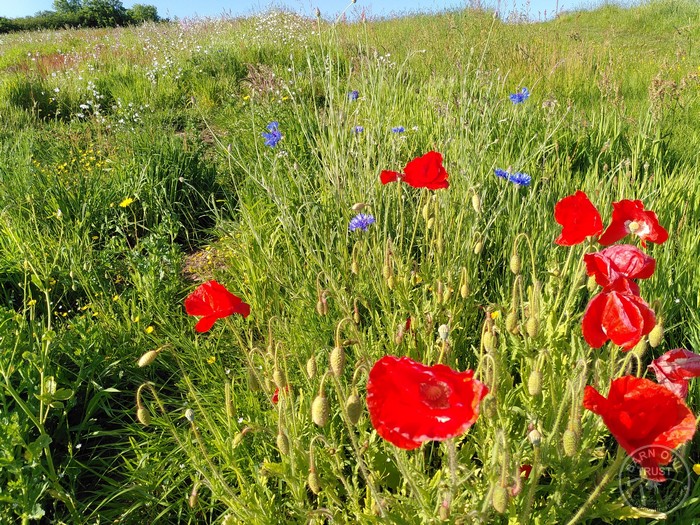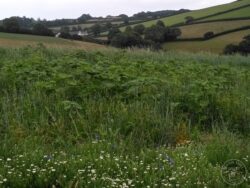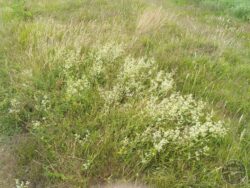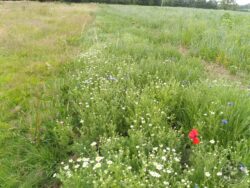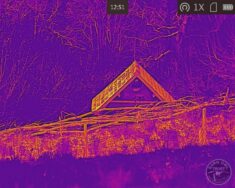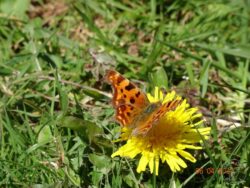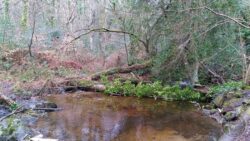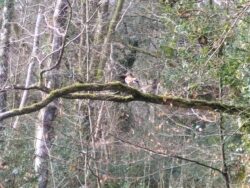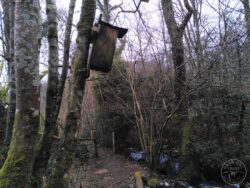December
- View across North Park
- Across the Rewilding area to the river
On the 4th, 8 Redwing were seen in the Pennsland Hedge. There were 2 Reed Bunting, 7 Linnet, 20 Chaffinch and 20 Goldfinch moving between the hedge and the wild bird food crop. A Sparrowhawk passed over the crop and a young Fox emerged. Greenfinch in the hedge between Kiln Close and top field. Pip and Harry dug around the abstraction pipes in the river which feed the ponds, and cleared roots and leaves from both of the abstraction chambers. They had become blocked by debris when the river was in spate, causing the level in the Flo Pond to drop. When they had finished, the water flowing into the ponds was back up to normal level.
During a lunchtime walk on the 6th, 2 Stonechat, 1 Jay, 30 Goldfinch, 6 Reed Bunting, 20 Chaffinch, 1 Song Thrush, Corvid flock (around 70 Jackdaw and 40 Carrion Crow), 1 Great Spotted Woodpecker were seen, and a Fox was seen again very close to the office in the utility area at about 3pm. A Barn Owl was seen flying over the solar panels at 18:00 on the 7th.
After a weekend of heavy rain, the river was in spate again and the abstraction chambers that feed the ponds were blocked again on the 11th. Harry donned his waders and cleared the blockages. It was a dry day with some sunshine and patches of blue sky. There was a Wood Mouse under the corrugated sheet by the Pennsland lane gate and what looks like a Field Vole nest under the sheet nearest the top Field Shelter. Several small birds flew out of the Blackthorn hedge, landing in the bird food crop and perching on the stalks.
![Llp winter bird walk [harry hingston] 121223 (a)](https://staging.barnowltrust.org.uk/wp-content/uploads/LLP-Winter-Bird-Walk-Harry-Hingston-121223-A-250x188.jpg) Our first Winter Bird Walk of the season was held on the 12th with wet and rainy conditions to start. Five people joined Mateo and Harry and saw Blue Tit, Great Tit, Robin, Blackbird, Wood Pigeon, Chaffinch, Goldfinch, Redwing, Carrion Crow and Common Buzzard. Later that day, Harry and 3 volunteers burnt up the brash in the orchard and a flock of 100+ small birds including Linnet and Redwing were seen and heard near the crop.
Our first Winter Bird Walk of the season was held on the 12th with wet and rainy conditions to start. Five people joined Mateo and Harry and saw Blue Tit, Great Tit, Robin, Blackbird, Wood Pigeon, Chaffinch, Goldfinch, Redwing, Carrion Crow and Common Buzzard. Later that day, Harry and 3 volunteers burnt up the brash in the orchard and a flock of 100+ small birds including Linnet and Redwing were seen and heard near the crop.
On the 13th Pip and Harry cleared more brash from the Utility Area, dragging it up to the Orchard and adding it to the embers in the bonfire. Harry and 3 volunteers began clearing one of the older patches of Blackthorn on the roadside hedge on the 14th. This is to ensure there is always young growth for the Brown Hairstreak Butterflies to lay their eggs.
Volunteers and some of the Conservation Team continued hedge laying in Forde Orchard on the 15th. They joined the Devon style hedge up to the South of England style which had been used where the ground on the far side of the stone wall was at wall height. They also burned up the brash at the same time, (the bonfire still had warm embers on the 17th). In the afternoon a group of 11 Rangers from the National Trust came for a site visit and presentation about the work of the Trust. A Kestrel was seen hunting over the crop.
On the 19th our volunteer grazers arrived – 13 Belted Galloways. The remaining brash around the firepit in the Orchard was burnt up on the 20th. A trail camera picked up a Tawny Owl perched on a stick in the river by the abstraction point. Another camera recorded a Badger eating the scattered Sunflower seeds in the crop. A Goldcrest was recorded on the Apprentice Path on 25th. On the 26th a Badger was seen passing through the woods on the Apprentice Path and another Badger was picked up, again in the bird crop, this time joined by a Fox. The camera showed the Tawny Owl perched on the same stick in the river on the 27th and on the 28th, a Fox was recorded passing through the woods and another Fox was On the 29th, a Grey Heron landed on the Flo Pond island. Later on, probably the same Grey Heron was recorded again, this time at the abstraction point in the river. A Fox was picked up again passing through the crop. The last recording of the year was a Fox passing the camera near the lower bridge.
The mean temperature for the month was 8.7°C, significantly above our 18-year average of 7.12°C but not as high as 2015 (11.2°C) or 2021 (9.2°C). Rainfall for the month broke the record here with 27-days of rain totalling 298.4mm (11.74 inches), 44.8mm (1.76 inches) fell on the 27th. The previous high was in 2022 with 296.8mm over 18-days and the average rainfall here (over 18-years) is 175.26mm for December.
The most notable things about the weather here this year is that we have broken our own records in 9 of the 12-months and our total rainfall for the year was 2060mm (81 inches or 6.75-feet). Our 18-year average is 1223.68mm (48 inches) and our previous high was 1561.20mm (61 inches) in 2020. Climate change is having an effect here, not just on our weather but on the seasons and the wildlife.
November
On the 1st November flowering plants in the wild bird food crop included Chicory, Corn Marigold, Cornflower and Poppy with lots of Yarrow and even some Germander Speedwell in the rough grassland, so plenty of flowers for the remaining pollinators. Sloes, Hawthorn berries, Holly and Rosehips were abundant in the hedgerows. Pip and Harry began the month by getting into the Flo Pond to clear the grass, Rush and Reed Mace that was invading the pond.
- Oak Leaves
- Path in Corn Wood
- Blushing Bracket Fungi
- Roadside hedge
- Autumn Colours
- Rosehips
- Holly
- Hawthorn
- Blackthorn – Sloes
- Cornflower
- Germander Speedwell
- Yarrow
- Poppy
- Corn Chamomile
- Chicory
- Corn Marigold & White Campion
A Kestrel was seen again on the 3rd hovering over the new crop. A flock of 50 or so Goldfinches were in the Blackthorn along from the Field Shelter. Three Field Voles were under the sheet of corrugated nearest the Field Shelter and a handful of Red Admirals were still gliding around the LLP.
A Buzzard has been seen several times perched on a fence post on the corner of the electric fence around the crop. It seems to be a favoured hunting place.
On the 6th the timber for the second Field Shelter in Kiln Close that had been delivered was moved up to the site. There is a delay in building as the digger has developed a track problem and we are waiting for in to be fixed before the groundworks can be completed. A photograph taken of the bird crop showed Goldfinch, Greenfinch and Chaffinch.
- The Bird Crop
- Autumn Colours
- Autumn Colours
Josh finished strimming the Orchid patch on the 9th and removed all the risings to promote growth next year.
Harry and volunteers Steve and Saleh cleared the old goat pen in the utility area and took down the fence returning the area to an open space on the 14th. The pen was created in 2018 when Annie and Clarabell (the goats) first arrived. Over their first year here they used it regularly but since then it had become completely overgrown. Steve and Harry then trimmed the hedge below the solar panels.
- Old Goat pen before clearing
- Old Goat pen gone
- Hedge behind the barn
- Hedge behind the barn
- Hedge behind the barn
Harry and 4 volunteers hand pulled all the brambles in the Corner Wood Bluebell patch on the morning of the 16th and in the afternoon Harry and volunteer Steve cleared the tree growth behind the tractor shed and cleared all the brash. On the 17th the Conservation team and volunteer Chris continued hedge laying in Forde Orchard. Because the hedge is on top of the stone wall in the orchard but at ground level on the other side they used a new style of laying (South of England).
Pip and Harry donned waders and got into the Flo Pond on the 22nd to continue clearing roots and rushes. On the 24th they were joined by Kate and cleaned the solar panels. They then cleared most of scrub in the utility area.
The month was colder than average with a mean temperature for the month of 8.6°C (average here 8.87°C), with a high of 14.6°C (mean 15.37°C) and a low of -0.8°C (mean 0.37°C). We had 24 days with rain (average for the month is 18.8) and a total of 259.4mm (mean 144.62mm). This is the 2nd highest rainfall we have recorded for the month in eighteen years. The only year with a higher total was 2022 when we recorded 347.1mm.
October
The first two weeks of October were unusually warm and dry with temperatures reaching over 23°C on three days and very little rain until 12th. Things changed on the 14th and the temperature dropped dramatically. A Kestrel was spotted hunting over the field on the 4th.
A Tawny Owl was seen bathing in the river near the cattle drink on the 6th and on the 8th a trail camera picked up a Fox crossing over the cattle drink, startling a Grey Heron. A Kestrel was perched on one of the Thistle quadrat posts, before flying to an Ash tree on the roadside edge on the 9th and Slow Worms were still being seen under the corrugated sheets at the top of the Main Field. Goldfinches were seen on the Sunflower heads in the crop and a flock of >20 was seen flying out from Pennsland Lane hedge. ‘Moby Dick’, the large Trout in the Flo Pond, seems to have escaped the Otter’s visit, and was seen in torch light on the 10th along with a smaller fish.
On the 13th a group of 11 volunteers from Francis Clark Accountants in Torquay spent their volunteer day here along with 3 regular volunteers. Despite the damp and drizzly day they had a great time beginning the process of laying the hedge on the Orchard stone bank and burning up the brash. They found small Frogs in the grass at the bottom of the wall.
- Orchard bank hedge
- Volunteers laying the hedge
- Volunteers laying the hedge
- Burning up the brash
- Finishing of the stretch of laid hedge
- First part done
- Start of the day for volunteers from Francis Clark Torquay
- Hedge laying
- Hedge laying
- Hedge laying
- Hedge laying
- Job done
A Buzzard flew up out of the rough grass in the Main Field on the 16th and all the paths were cut with the tractor. On the 17th the biggest flock (60+) of small birds so far this autumn, flew off the crop, probably feeding on the Sunflower heads, they circled around before dropping back into the crop. Harry and 4 volunteers cleared the double height fence in the Orchard, moved two sheets of plywood to the crop to scatter additional bird seed on and started creating a rock pile in Kiln Close, where the digger has been working on the 2nd Field Shelter .
On the 19th Harry and two volunteers started hand pulling all Brambles and saplings within the Bluebell patch in Corner Wood. In the afternoon they began clearing one of patches of Blackthorn from the roadside edge to maintain the habit required for the Brown Hairstreak Butterfly.
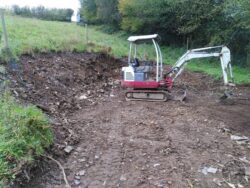 On the 24th a group of six joined us for an Autumn Colours Walk. Despite the rain, at times quite heavy, we enjoyed a 2-hour stroll around the LLP. Because of the seasonal changes the autumn colours weren’t as advanced as last year, but we could see some of the trees in the woodland beginning to change. We saw Buzzard, Sparrowhawk and Linnets which we also heard singing in the trees in the hedge and flying over the new Winter Bird Crop. Parasol mushrooms were visible in the long grass in both Kiln Close and the roadside part of the Main Field. The walk also took in the site of the 2nd Field Shelter which Harry has been preparing the ground for with our donated mini digger. We are hoping building work will commence on this shortly. They were amazed by the stump of the large Silver Birch which came down in July by the long boardwalk on the Apprentice Path, and is sprouting lots of new growth.
On the 24th a group of six joined us for an Autumn Colours Walk. Despite the rain, at times quite heavy, we enjoyed a 2-hour stroll around the LLP. Because of the seasonal changes the autumn colours weren’t as advanced as last year, but we could see some of the trees in the woodland beginning to change. We saw Buzzard, Sparrowhawk and Linnets which we also heard singing in the trees in the hedge and flying over the new Winter Bird Crop. Parasol mushrooms were visible in the long grass in both Kiln Close and the roadside part of the Main Field. The walk also took in the site of the 2nd Field Shelter which Harry has been preparing the ground for with our donated mini digger. We are hoping building work will commence on this shortly. They were amazed by the stump of the large Silver Birch which came down in July by the long boardwalk on the Apprentice Path, and is sprouting lots of new growth.
- Autumn Colours Walk – Kiln Close
- Autumn Colours Walk – North Park
- Autumn Colours Walk – Corner Wood
- Sprouting Silver Birch stump
Pip started strimming the Orchid patch in Kiln Close on the 24th. On the 25th a Field Vole was seen under the corrugated sheet by the electricity pole stay and the top of the Main Field. It was seen again on the 30th.
On the 7th and 8th, we recorded temperatures here of 23.2°C and 23.3°C respectfully. Our average high is 19.16°C but we recorded 25.2°C in 2011. The mean temperature for the month was 12.7°C (18-year average here is 12.31°C). We had 20 days with rain. The heaviest rain was on the 18th when we had 27mm (1.06 inches) and our total for the month was 206.8mm (8.14 inches). Our average is 127.36mm for the month so it was a lot more than that, but in 2021 we had 210.4mm in October and in 2013 we had 270.6mm (10.65 inches) in the month.
September
The month started dry and unusually warm. A Kingfisher was seen perched on the plank across to the island in the Flo Pond on the 1st. It flew off up the valley when it spotted us.
On the 4th we collected a few of the larger Sunflower heads in the Bird food crop, to dry for seed next year.
Slow Worms (Anguis fragilis) have been seen almost everyday for weeks under the two corrugated sheets at the top of the Main Field, sometime just one or two but often as many as four or five.
On the 7th a female Whinchat on the NW side of the Bird Crop and a Siskin was seen drinking in the abstraction pipe pool part of the river. There was also a dead Weasel found on the Wibbly Wobbly path.
For some time now we have thought that an Otter has occasionally visited our ponds and on the 9th we were lucky enough to catch a glimpse of its back end on the trail camera, swimming in the Flo Pond, hopefully it will control the Brown Trout that feast on the dragonfly larva, tadpoles and other wildlife in the pond.
On the 12th Harry brush mowed a strip around this year’s Winter Bird Crop for the electric fence to go up before the cattle come in for the winter grazing. The overgrowth on the stone walls in Forde Orchard was cleared on the 13th by a group of seven volunteers from the VAT Team at Francis Clark in Exeter. They also reduced the weight of apples on some of the trees, to prevent branches breaking. There were lots of Fox Moth caterpillars around.
- Clearing the stone walls
- Leaving ferns and moss
- Lightening the apple trees
Volunteer Caroline joined Harry on the 14th to clear the stone wall outside the Hospital Aviaries and around the Kiln Close cattle trough. A Heron was seen perched in the dead Ash Tree above the Abstraction Pool on the 14th, the first sighting for a while. On the 15th a new gate was fitted onto the front of the First Field Shelter.
- Path around Bird Crop
- New gate on Field Shelter
- Hospital Avairy wall
- After clearing
The Kingfisher was back again on the 16th and captured on the trail-cam calling and fishing on the Flo Pond. We also caught sight of a fish jumping right out of the water in front of the camera.
The Heron was seen again on the 16th flying low over the Main Field and heading east, away from the river. The extreme rainfall on the 17th brought us 66mm of rain (17.8mm in just 30-minutes in the early hours during a thunderstorm). This stirred the river up and blocked the abstraction pipes meaning that the Flo Pond level fell significantly. On the 18th Harry brush mowed the top of the Orchard.
- River in spate 17th September
- Dark Bush Cricket
- Top of Orchard – before
- After
- Happy Goats in the Main Field
- Pale Tussock Moth Caterpillar
The electric fence was moved on the 21st to protect the Bird Crop. All outside gates are now shut ready for the cattle and the goats have free-range everywhere except for North Park, the Orchard and the Bird Crop. On the morning of the 22nd Harry plugged the holes in the Flo Pond (again) with turf at and swept the abstraction pipes as the water level in the pond was very low. By early afternoon the level was back to normal. A Roe Deer was seen running down the remnant hedge on the Main Field side. On the 25th the Flo Pond level had dropped again, but not back down to the same level previously plugged. Harry strimmed the lower part of the Orchard. A Kestrel was spotted hunting over the old bird crop before making its way over to Kiln Close to continue. Slow Worms were seen under both sheets of corrugated at the top of the Main Field.
An electric fence was fitted around the release aviary in the Main Field on the 27th as a cat had been caught on camera taking some of the released owl’s food. Kestrel seen again hunting over Main Field and Kiln Close. Pond levels were higher but still not flowing over the stream, bubbling still coming up from the Oakley Pond as the water is running under, not over the stream bed.
Stonechats were seen on the Sunflower heads in the crop and a Barn Owl was seen in the Kestrel provision of Wildlife Tower on the 28th. There were approximately 20 Meadow Pippet seen the Main Field and a Chiffchaff in the Holly behind the Field Shelter. Slow Worms were seen again under the corrugated sheet most days, as was the Kestrel hunting over the Main Field and the Bird Crop.
Our weather broke records again in September with a high temperature of 27.3°C, the highest we’ve ever recorded for the month, our 18-year average high is 22.2°C. The mean temperature for the month was 16.2°C (average 14.23°C) again the highest recorded here. We had the wettest September: 16-days with rain, a total of 182.8mm (average here 68.29mm).
August
- Sunflowers in Bird Crop
- Shaggy Inkcap
- Six-Spot Burnet Moth
- Annual mowing above ponds
The temperature peaked at 18.9°C on the 1st and in the fleeting sunshine, Golden Ringed and male Emperor Dragonflies were patrolling the two ponds. Lots of Holly Blue, Green-veined and Gatekeeper Butterflies were seen around the pond margins: the stream between the ponds was still flowing. We had great views of a female Roe Deer grazing on the lower path in North Park before taking off towards Pennsland lane, and Pip spotted a Wall Butterfly at the entrance to Kiln Close on the 2nd.
- Before
- and after
In Corner Wood, Harry cleared scrub and saplings on the 4th to allow more light into the river, parallel to the rewilding area. We are hoping to encourage more insects over the river and that the Dippers will then resume breeding under the top bridge. Mushrooms are starting to appear in Corner Wood and the Main Field.
On the 8th, Harry began the annual cut in the orchard above the Flo Pond and on the 9th he continued clearing scrub and saplings along the river in Corner Wood. The paths were cut with the tractor on the 9th August.
Groundworks on the second Field Shelter, which will be in Kiln Close, began on the 11th using our donated mini digger.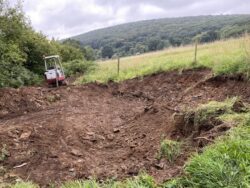
A Hornets’ nest was recorded in the Mandarin Duck nestbox on the Tractor Shed on the 14th. We now have them in four places on the reserve: a Polebox, a Dormouse box, the Barn Owl provision in the Wildlife Tower and now the Duck box.
On the 16th Harry continued clearing around the Oakly Pond and braced one of the Apple trees which was leaning. He resumed the Field Shelter digging on the 17th and recorded frequent sightings of Jersey Tiger Moths and Hummingbird Hawk Moths on the Buddleia outside the Meeting Room. By the weekend the Sunflowers in the Winter Bird Food Crop were going over.
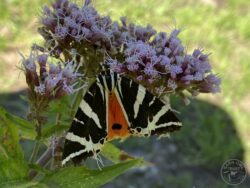 Great views of a Sparrowhawk over the reserve on the 20th interacting with a couple of Crows, it was seen again on the 21st and a Kestrel was recorded hunting over the old bird crop on the 22nd.
Great views of a Sparrowhawk over the reserve on the 20th interacting with a couple of Crows, it was seen again on the 21st and a Kestrel was recorded hunting over the old bird crop on the 22nd.
On the 24th Pip and Harry cut back the vegetation on the island in the Flo Pond, and on the 27th a female Roe Deer was seen running up the Main Field above the office from behind the solar panels. We were still seeing some Birds Foot Trefoil and Lesser Stitchwort in the rough grass.
For the first month this year we didn’t break any weather records during August. We had a mean temperature of 15.8°C compared to an average of 15.9°C. Our highest temperature was 23.5°C (average 24.8°C) and our low was 10.2°C, significantly warmer than the average of 8.1°C. We had 19 days with rain, compared to an average of 16, but this was significantly fewer days than in 2012 when we had 26. Total rainfall for the month was 105mm (average 82mm) however in 2012 we had 157mm, and 154mm in 2016. The heaviest rain was on the 31st when we recorded 19.6mm.
July
 On the 3rd unusually for the LLP, a Rabbit ran into the Holly hedge from near the Field Shelter, we rarely see Rabbits on the reserve although they are common further up the valley. The first of the Sunflowers in the new ‘Crop’ were flowering. The Skylark was heard singing again over the ‘Airstrip’ on the 3rd and the morning of the 4th. By the 4th the mean temperature here had dropped from 15.7°C at the end of June to 13.3°C and we had some rain. This year’s Bracken Bashing started on the 4th, Harry and a volunteer began in Kiln Close, they saw lots of Grasshoppers, Great Green Bush Crickets, Marbled White, Meadow Brown and Small-Skipper Butterflies and Six-Spot Burnet Moths.
On the 3rd unusually for the LLP, a Rabbit ran into the Holly hedge from near the Field Shelter, we rarely see Rabbits on the reserve although they are common further up the valley. The first of the Sunflowers in the new ‘Crop’ were flowering. The Skylark was heard singing again over the ‘Airstrip’ on the 3rd and the morning of the 4th. By the 4th the mean temperature here had dropped from 15.7°C at the end of June to 13.3°C and we had some rain. This year’s Bracken Bashing started on the 4th, Harry and a volunteer began in Kiln Close, they saw lots of Grasshoppers, Great Green Bush Crickets, Marbled White, Meadow Brown and Small-Skipper Butterflies and Six-Spot Burnet Moths.
The hung-up Silver Birch tree at the end of the long boardwalk on the Apprentice Path came down over night with the rain and wind. There were 3 Rabbits on the reserve in the early hours, 2 by the old goat trailer and 1 just behind the Field Shelter. A Roe Deer was spotted in the new bird crop, a first for this area. The Skylark was singing near the airstrip.
 At 5:30am on the 5th, a very large, full-grown Rabbit was seen to run into Pennsland hedge between the corrugated sheets and the goat trailer, and two smaller ones were seen by the new Field Shelter. Also a female Roe Deer was standing in the crop near the cut off electricity pole. Later that day, 5 visitors joined Harry and Pip for our annual Butterfly Walk. They saw Marbled White, Meadow Brown, Large and Small-Skipper, Ringlet, Small White, Large White, Comma, Silver-washed Fritillary, Red Admiral and Gatekeeper Butterflies.
At 5:30am on the 5th, a very large, full-grown Rabbit was seen to run into Pennsland hedge between the corrugated sheets and the goat trailer, and two smaller ones were seen by the new Field Shelter. Also a female Roe Deer was standing in the crop near the cut off electricity pole. Later that day, 5 visitors joined Harry and Pip for our annual Butterfly Walk. They saw Marbled White, Meadow Brown, Large and Small-Skipper, Ringlet, Small White, Large White, Comma, Silver-washed Fritillary, Red Admiral and Gatekeeper Butterflies.
On the 6th the Bracken Bash continued with Pip, Harry and 4 volunteers, they finished Kiln Close and the roadside edge compartment with the goats in.
Since the winter of 22/23, a 92mm Trout and a smaller one have been consistently seen in the Flo Pond. The Skylark has  been heard singing at least some of the time most days recently, and consistently on the 9th. The fallen Silver Birch tree was blocking the Apprentice Path and was cleared on the 10th. The Bracken Bashing continued on the 11th in the Orchard, Main Field and North Park. A branch had fallen from a dead Ash tree, on the lower path into Corner Wood. The Skylark was seen and heard again during the early evening over the Airstrip. A male Roe Deer was picked up on the trail cam on the top path in Forde Orchard
been heard singing at least some of the time most days recently, and consistently on the 9th. The fallen Silver Birch tree was blocking the Apprentice Path and was cleared on the 10th. The Bracken Bashing continued on the 11th in the Orchard, Main Field and North Park. A branch had fallen from a dead Ash tree, on the lower path into Corner Wood. The Skylark was seen and heard again during the early evening over the Airstrip. A male Roe Deer was picked up on the trail cam on the top path in Forde Orchard
A female Roe Deer was also picked up by the trail cam in the early morning of 12th. The nectar strip along 2 sides of the Winter Bird Food Crop was looking magnificent, red, white and blue, Poppies, Corn Camomile and Cornflowers.
On the 13th Harry and 4 volunteers finished the Bracken Bashing and continued pulling thistles in the goat compartment. Great views of a female Kestrel flying over the Main Field, hunting in the old winter bird crop and eventually flying down and over Kiln Close. 100s and 100s of Six-spot Burnet Moths, several Small Copper, lots of Small Skipper and Meadow Brown Butterflies were seen.
A White Admiral Butterfly was spotted in North Park, flying around the woodland edge, feeding on the Brambles on the 19th. This is only the second sighting of this species on the reserve, the last was in July 2017. On the 21st a flock of >500 Jackdaw and Rook (#20%) moved through the Ashburn Valley and were seen and heard over the Main Field before moving off south-east. A female Kestrel was sitting on top of North Park pole-box, possibly a 1st year bird. 3 Sand Martens were hawking over the old winter bird food crop.
On the 25th Harry and Tim began a light summer prune of the fruit trees in Forde Orchard and on the 27th they stuffed the pond leaks with turf. The stream between the two ponds started flowing well. Water entering the Oakley Pond from under the liner was reduced massively but still leaking. However 6-days later, the stream was still flowing which is a huge improvement on earlier in the year. The brush mower was used to cut the lower part of the orchard on the 23rd and on the 28th Pip and Harry cleared the remaining area above the Flo Pond where the mower couldn’t be used, they also continued pruning the Apple trees.
By the end of the month, the Sunflowers in the Winter Bird Crop were looking wonderful, and the nectar strip was still in full flower.
Our weather here has broken records every month this year and July is no exception: we have been recording weather data here for 18-years. We had 23 days with rain (mean 14.5-days), total rainfall was 176.2mm (mean for July: 76.6mm) 242% of average rainfall for the month. It was also more than 1°C cooler than the mean temperature at 15.4°C (average here for July is 16.45°C).
June
Self-seeded Cornflowers appeared in the old Winter Bird Food Crop alongside the Poppies at the beginning of the month. On the 1st of the month, Harry and 3 volunteers began pulling Creeping Thistle in the area of the Main Field fenced off for the goats. Harry continued this task with 2 volunteers on the 6th.
At least 5 Field Vole youngsters were seen under the corrugated sheet on the 1st but by the 3rd they had disappeared, and on the 5th, a solitary Slow Worm was present. Where the bedrock is close to the surface, the vegetation is starting to die back after 3 weeks with no rain, and the river is low.
There was a huge amount of ‘kerfuffle’ on the lower path in the Main Field at about 4:30pm on the 6th. A pair of Magpies and 3 Carrion Crows were having a ‘set-to’. On investigation we discovered a dead Magpie nestling on the path that had been removed from the Magpie nest in the large Sycamore tree on the boundary. Both the Crows and the Magpies had abandoned it and had moved their battle to the tree.
A large number of Damselflies were seen around the Flo Pond on the 7th. The abstraction pipes that bring water into the ponds from the river still need regular brushing but less so since there has been no rain to swell the river.
With no rain since 14th June and high temperatures, the Bird Food Crop had been growing very slowly with just the Sunflowers visible, but 1mm of rain on the 10th was enough to give everything a boost and by the 15th some of the Sunflowers were almost 1-foot high.
On the 12th the trail cam recorded a female Roe Deer walking downstream near the cattle drink. The Skylark, last heard on the 23rd May, was back again, singing over the crop during the early evening of the 14th and the 15th, it then moved to back over the Airstrip and could be heard singing most of the day between the 16th and 19th.
A dead Song Thrush was found on a path in the Orchard on the 15th. Golden-Ringed Dragonflies were seen around the Flo Pond and Main Field. Harry and a volunteer pulled Thistles in the morning.
A Dipper was seen flying upstream, near the fence boundary in Corner Wood on the 16th.
On the 18th some aerial photos were taken of the Reserve. The picture (above) shows the relative size of the new bird food crop which is smaller this year (left) and it’s typically patchy which is actually a good thing for wildlife. The larger leaves you can see are sunflower plants. To the right, last year’s crop area is now dominated by very tall Yorkshire Fog (a favoured grass for Field Voles) and Red and White Campion.
 The Corn Camomile in the crop was coming into bud on the 19th and some of the Sunflowers were 18” high. Five volunteers joined Harry for more Creeping Thistle pulling on the 20th.
The Corn Camomile in the crop was coming into bud on the 19th and some of the Sunflowers were 18” high. Five volunteers joined Harry for more Creeping Thistle pulling on the 20th.
The Skylark was heard and seen flying over Main Field. Lots of Dragonflies were patrolling the Main Field; Golden-ringed & Emperor. Large quantities of Marbled White were seen and several Great Green Bush-crickets. Swifts and House Martins were flying around the Main Field as well. Lots of Six-spot Burnet Moth cocoons were spotted on the tall grass.
Our Sumer Solstice walk on the evening of the 21st was attended by 9 visitors who enjoyed their walk around the reserve until sundown. We talked about the rarity of this kind of habitat across the UK and much to everyone’s delight we saw a Roe Deer in North Park. Some of the Sunflower plants in the Crop were 2-foot high.
By the 27th the nectar strip around the Crop was starting to look spectacular, the Corn Camomile, Cornflower and even the occasional Poppy were flowering. The Hedge Bedstraw patches in the rough grassland were also flowering and smelling amazing, especially in the evenings. Volunteer Tony was checking the Dormouse boxes with Harry who was unfortunately stung by a Hornet and had an allergic reaction. Interestingly the ambulance driver that came out to check him had been here before for a Winter Bird Walk. Luckily Harry was fine apart from some swelling and itching for a few days, he is now carrying antihistamines.
On the 28th the first Fritillary Butterflies of the year were spotted, one flying around the Meeting Room and another on the dead Ash stump in the car park.
Once again, the weather during the month broke records here as well as nationally. Our 18-year records here have a mean temperature of 14.76°C, this year we recorded a mean of 16.9°C, more than 2°C higher. We also recorded out highest ever June day on the 13th at 28.4°C. We had just 18.8m of rain over 7 days in the month (average here for June is 63mm) with 8.6mm on the 20th. The ground is rock hard and the vegetation on a lot of the paths is dying due to the dry conditions.
May
Three Rabbits were seen grazing by the First Field Shelter, mid-afternoon on the 1st, a very unusual sight on the LLP. The Barn Owl was seen flying and heard again at 11pm. No Mallards were sighted on the ponds but the 4 were back again on the 2nd and had stirred up both ponds. At 7pm there was just one roosting on a rock in the Flo Pond. 2 Blue Tits were at their nests in the Tractor Shed nestboxes, another nestbox had 4 cold Great Tit eggs which had been laid on top of a promising Nuthatch nest, and 2 more boxes had 2 eggs each (cold), probably Great Tit. A male Kestrel hunting over the top field, 5 Stock Dove and 5 Herring Gulls were on the newly ploughed bird crop. A female Roe Deer was seen in the scrub near the Cattle Drink at about 8:30pm and shortly after in North Park, disappearing into the Main Field.
By the 10th the paths which had been yellow with flowering Dandelions were yellow and white with Dandelion clocks and Buttercups. The old Bird Crop area was mainly pink and white with Campion and splashes of yellow from Forage Rape. A large patch of Sorrell created a splash of deep maroon. On the new Bird Crop area Sunflowers had germinated and some of the cereals were starting to grow. Patches of Germander Speedwell and Stitchwort could be seen in the long grass. The Skylark which had been heard frequently until mid-April was heard again on the 4th but not since. The family of Field Voles under the corrugated sheet at the top of the Main Field had dispersed so the sheet was moved onto fresh grass. On the 11th a Female Kestrel was hunting over old winter Bird Crop.
 Slow Worms are being seen regularly, between two and five at a time, under the corrugated sheet near the Pennsland Lane gate. We have also seen the occasional Field Vole under there. Slow Worms and Field Vole have also been seen under the sheet on the crossroads, near the Old Bird Crop area.
Slow Worms are being seen regularly, between two and five at a time, under the corrugated sheet near the Pennsland Lane gate. We have also seen the occasional Field Vole under there. Slow Worms and Field Vole have also been seen under the sheet on the crossroads, near the Old Bird Crop area.
On the 12th the trail-cam recorded our first sighting of a Red Deer on the reserve, it was crossing the river by the Cattle Drink, this is where we usually record Roe Deer.
The main paths were mown with the tractor on the 17th and Harry strimmed under the electric fence line and the footpath to the bridge in the orchard.
Throughout the month we have been finding broken eggs, mainly hen and duck, but also a couple of Blackbird eggs, on the path in the Main Field at the top of Kiln Close. A trail-cam has been set up nearby to try and record the culprit.
The Barn Owl, first seen roosting in the Stock Dove provision of the Wildlife Tower on the 28th April, was been flying over the reserve, office and aviaries screeching repeatedly every dry evening from dusk, sometimes for several hours until the 18th when it suddenly went silent.
The trail-cam set up to catch the ‘egg culprit’ failed, due to them moving to another part of the path to eat their pickings. However, on the 19th it recorded a Roe buck walking past, and on the 20th a Fox.
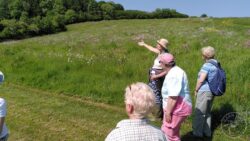 On the 22nd the trail-cam on the Flo Pond showed that Mandarin ducks have been using the pond for the past week, as have 3 male Mallards. The Slow Worms under the corrugated sheets by the Pennsland Lane gate were absent but two Field Voles were seen on the 23rd and after a long absence the Skylark was seen again near the Airstrip. We had great views of it flying low and interacting with three Meadow Pipits.
On the 22nd the trail-cam on the Flo Pond showed that Mandarin ducks have been using the pond for the past week, as have 3 male Mallards. The Slow Worms under the corrugated sheets by the Pennsland Lane gate were absent but two Field Voles were seen on the 23rd and after a long absence the Skylark was seen again near the Airstrip. We had great views of it flying low and interacting with three Meadow Pipits.
The 24th was ATV (All Terrain Vehicle) training on the LLP for 3 of our staff and the Spring Flower Walk attended by 11 visitors. We had perfect weather and all of the plants that were in flower are identified on our ‘Wildflowers of rough grassland’ page. On the 26th two male Beautiful Demoiselle were flying around the Flo Pond, on the 28th there were three.
On the 28th Poppies, self-seeded from last year’s nectar strip, had appeared in the area on the edge of the old crop in the allotment area where staff grew potatoes last year. A swarm of Bees, over 1,000, flew over the Main Field on the 30th heading towards the Field Shelter end of Pennsland Lane and on the 31st a dead Mole was found on the path in North Park. .
We had 67.8mm of rain during the month, (average 73.2mm) but unusually this was over just 7-days during the first two weeks of the month. Since then, no rain at all and the Winter Bird Food Crop growth has slowed. The mean temperature for the month was 13.2°C (18-year average temperature here 11.9°C).
April
The Skylark was singing again over the Airstrip and the Chiff Chaffs could be heard in Corner Wood. The fallen Willow tree blocking the path at the top of Corner Wood was cleared. The first Field Shelter in the top of the Main Field is almost finished and the goats, Annie, Alfred and Archie were seen in there for the first time on the 2nd. Three Plum trees in the orchard are now in blossom.
On the 3rd Harry and Tim (ACO) finished clearing the fallen Willow and the new area for this year’s Winter Bird Crop was mown. On the 4th with volunteer Tim, Harry cut back the hedge above the solar panels. A Stoat was seen crossing the river at the Cattle Drink using the fallen trees on the 6th, six Swallow nest cups were fitted in the First Field Shelter and there were about 30 Linnets over the old crop area.
A male Roe Deer was spotted laying down in the crop, it then stood up and watched before slowly walking away. There was a Field Vole under a corrugated sheet at the top of the Main Field. Harry stuffed turf into the Flo Pond leak and blocked some of the flow from under the liner into the Oakley Pond but it was still flowing slightly, indicating another leak. There was lots of Tadpole activity, in both ponds, especially the Oakley Pond. Pip did the first butterfly transect survey of the season and she recorded Brimstone, Comma, Small Tortoiseshell and Peacock.
Ploughing of the new Winter Bird Crop happened on the 7th followed by harrowing on the 9th. A male Wheatear, 2 Pied Wagtails and 4 Linnets were seen feeding on the newly turned soil. A pair of Mandarins were on the Flo Pond. The Orchid spikes in Kiln Close had appeared by the 11th, a Grey Heron was spotted on the Flo Pond at 7am. The Mandarin Ducks were seen again. The electric fence around the old Winter Bird Crop area was taken down by Harry and Pip ready to be moved to a new location to contain the Goats. The Flo Pond leak was still flowing into the Oakley Pond under the liner. A Kestrel was seen over the Main Field and a Roe buck was in the crop on the 13th.
On the 14th a female Roe Deer was spotted in the rewilding area. The first Early Purple Orchid has bloomed in Kiln Close. A Skylark was seen landing at the southern end of the Airstrip. There were 25 Linnets and 2 Stock Dove around the old crop area and 3 Pied Wagtails on the newly ploughed area, 5 Swallows hawking low over grassland and a Blackcap singing from Pennsland hedgerow. The Mandarin ducks were still being seen on the pond daily on 17th. The river between ponds was flowing well. The Field Vole was still under the corrugated sheet at the top of the Main Field. Harry and Tim added a 3rd line of electric fence, the Goats are now contained in the Main Field roadside edge boundary. The Bluebells were starting to open. On the 18th two Slow Worms were seen under the corrugated sheet near the Pennsland Lane gate, The first Green Veined White Butterfly of the year was spotted, and a Stock Dove flew out of the Barn Owl provision in the Wildlife Tower.
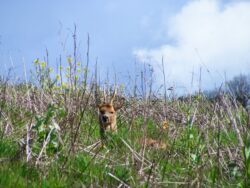 Our Spring Walk participants on the 19th had two great views of the male Roe Deer, one in the old crop and one in the rewilding area as they walked around the reserve. They also saw Primroses, Dog Violets, Stitchwort, Wild Strawberry flowers, Herb Robert, Celandines and Dandelions flowering and Fodder Rape in the old crop area, plenty of food for the pollinators. Hemlock Water Dropwort was removed from pond streams, inflow and between the ponds and from the Flo Pond island.
Our Spring Walk participants on the 19th had two great views of the male Roe Deer, one in the old crop and one in the rewilding area as they walked around the reserve. They also saw Primroses, Dog Violets, Stitchwort, Wild Strawberry flowers, Herb Robert, Celandines and Dandelions flowering and Fodder Rape in the old crop area, plenty of food for the pollinators. Hemlock Water Dropwort was removed from pond streams, inflow and between the ponds and from the Flo Pond island.
Harry and volunteers Steve, Chris, Paul and Jen had a bonfire in North Park and Forde Orchard on the 21st, burning up brash from hedge laying earlier in the year. The Mandarin Ducks appear to be nesting in the replacement box by the Cattle Drink, our thermal image monocular picked up a heat source in the bottom of the box on 23rd. On the 25th a Redstart was heard singing and male Pied Flycatcher was seen, both in trees near the Cattle Drink. A record number of Early Purple Orchids were counted, 146+ growing in the patch in Kiln Close.
On the 25th a baby Field Vole was seen under the corrugated sheet at the top of the Main Field and two Slow Worms were seen again under the corrugated sheet near the Pennsland Lane gate. A Redstart was heard singing and male Pied Flycatcher seen, both in trees near the abstraction pipe pool. On the 26th the new Winter Bird Crop site was seeded and harrowed; we also planted a nectar strip. Bird food mix – Triticale 45%, Spring Barley 25%, Dwarf Sorgum 8.5%, White Millet 7%, Spring Linseed 5%, Jap. Reed Millet 4%, Red Millet 3% and Gold of Pleasure 2.5%, with a generous helping of Dwarf Black Sunflower seeds. Poppy, Corn Camomile and Cornflower made up the Nectar Strip. This is the first time of planting in this area – between the tall electricity pole and Pennsland Lane and in order to stop them dominating the crop we have left Corn Marigold and Forage Radish out of the mix this year. At least 146 Early Purple Orchids were counted in the patch in Kiln Close.
On the 28th a Barn Owl was seen in daylight in the Wildlife Tower in North Park and that evening was seen and heard flying over the Orchard and the Main Field. There were 4 Slow Worms under the corrugated sheet by Pennsland gate on the 29th and an adult Field Vole with at least 5 mobile young under the one by the electricity pole. That evening the extremely vocal Barn Owl was heard again.
The 30th saw 3 male Mallards and one female spend the day on the ponds and sitting on the edge, they were still around at 10.30pm, on the Flo Pond in the dark. The Barn Owl was heard again, flying over the Orchard and the Main Field, screeching repeatedly.
We have been recording the weather here for 18 years and this April broke our rain record; we had 125.8mm of rain over 16-days, this is 221% our average for the month- 59.96mm. The mean temperature was 8.8°C, below average – 9.13°C, however we have recorded several years with lower mean temperatures.
March
We had a great view of a female Sparrowhawk flying out of the Pennsland Lane hedge and over the wild bird food crop as we walked up the path on the 1st. The first Lent Lily, a wild Daffodil, appeared in the Orchard and more Primroses were blossoming along the Pennsland Lane hedge in North Park. The Gorse was also flowering. The Mandarin Ducks were back on the Flo Pond at 06:15am on the 2nd. There was a beautiful sunset on the 2nd, a Tawny Owl could be heard calling in the distance and one suddenly appeared in the dusk, flying low over the top of the Main Field, and heading towards the one calling.
On the 3rd Linnet numbers had swelled to 250-300+ and they were flocking in the trees at the top of Corner Wood, River Bank Wood and the North Park hedge and chattering really loudly. Every now and again a group would fly out over the crop, landing for a while before heading back to the tree top to resume their singing. Bluebell leaves are appearing in Corner Wood. More work continued on cutting up the felled Ash trees in the Main Field.
On the night of the 4th a walk with a thermal scope showed a Rat emerging from the Flo Pond and heading for the river. Both our Tawny Owl nestboxes, along the Apprentice path and in Corner Wood, showed a heat signal showing there were occupants of some kind, as did a Woodpecker hole in a dead tree. A large Brown Rat was also seen in the Flo Pond.
The trail-cam on the Flo pond revealed some interesting activity early in the morning of the 5th, the Mandarin Ducks on the pond were chased by a Brown Rat (video below). There are at least 3, two smaller ones and a fairly large one. One makes several trips to and from the pond island each night. We’ve been surprised by the amount of rat activity the trail-cam has revealed. A Grey Wagtail was seen near the Kingfisher Wall.
On the 7th Harry and 3 volunteers burned two more of the Ash brash piles. The rain arrived in the early hours of the 8th and the abstraction pipes were clogged from the rain stirring up the river, making the Flo Pond level very low. Some of the Frog spawn near the Kingfisher Wall was not under water, so the pipes needed to be swept more regularly. A second trail-cam was set up facing the pond island.
Harry and 3 volunteers burned up brash form the hedge laying in North Park on the 9th. A walk with the thermal image scope revealed something nesting/roosting in the bottom of the Tawny Owl box along the Apprentice Path, the one in Corner Wood appears to be empty. Straw bales were delivered to the first Field Shelter and the hayrack installed for the goats, they will be able to move in soon. 400+ Linnets over the crop, the highest number this winter so far.
On the 12th a Grey Squirrel was seen exiting the Tawny Owl box on the Apprentice Path, meaning that it is unlikely the box is being used by breeding Tawnies. The ’dogs on leads’ rule was applied from the 13th through the Orchard, the Apprentice Path and Corner Wood to avoid disturbance to nesting birds. The dead Ash by the abstraction point came down over the river overnight crushing the Mandarin Duck box on it: inspection showed the box to be empty. The tree was quite rotten but took out fencing on both sides of the river. The first report of Skylark singing over the Main Field, dog walkers have also been asked to avoid the Airstrip area where they have previously nested. On the 16th at 5:30pm both the Mandarin Ducks were in the Watercress at the top of the Flo Pond. The noise of the Linnets chattering whilst perched in the trees and the hedgerows has been amazing for the last two weeks, 500+ were counted on the 17th.
The Mandarin Ducks were seen perched on the edge of the path by the abstraction point on the afternoon of the 19th looking across the river to where the tree with their box had been, half an hour later they were on a branch over the fallen tree still appearing to be looking for their box. Just before dusk we moved the Mandarin Duck box by the top bridge down to a Sycamore by the Cattle Drink.
- Tree down, duck box crushed
- Ducks looking for box
- Over the fallen tree
- Replacement box
On the 20th trail-cam footage taken over the previous week revealed that the island on the Flo Pond had become a Brown Rat stronghold with hundred of video showing numerous Rats, some catching Frogs and Toads. At 5:40am a Tawny Owl appeared briefly on the edge of the island. Late morning, over 500 Linnets were seen flying up out of the crop and soaring around.
The two Almond trees in the orchard were in blossom and a female Kestrel was seen hunting over the Top Field on the 22nd, and again on the 27th when the new bird food crop area was mowed between the Wibble, the Long Path, the long pole, and the Pennsland hedge. The first of the Plum trees in Forde Orchard was in blossom on 28th and more Blackthorn was blossoming in the hedges. A pair of Mandarin Ducks were seen on the Flo Pond late on the afternoon of the 28th and again on the morning of the 29th when Harry and Holly removed the sand/silt that had built up around the abstraction pipes caused by the river being in spate. The Mandarin Ducks were on Flo Pond at 9:50am. A pair of Siskins were together in the evergreen at the Waterleat entrance gate. Chiff Chaffs were heard singing in Corner Wood most days during the last week of the month.
On the 30th a Skylark was recorded singing on the LLP, it had been around for much of the previous week. Another LLP first; when 5 Mandarin ducks were seen on the Flo Pond, 3 male and 2 female. 12 Stock Doves were seen over the crop and 12+ Linnets.
The wind and rain overnight on the 30th/31st brought down the 2nd half of the Willow tree on the Pennsland Lane boundary at the top of Corner Wood blocking the path, it also brought a large Ash Branch down with it. 11 Stock Dove flew from/over the crop. One pair of Mandarins were on the Flo Pond and another pair on the west bank of the ‘Dog Pool’ above the top bridge. Only about 6 Linnet were seen, their numbers dropped off dramatically during the last week of the month. Harry and Holly erected a new Mandarin Duck box over the Dog Pool above the top bridge to replace the one removed on the 19th.
Another record-breaking month for weather here, with 328.4mm of rain over 24 days during March. Our average is 114mm and the previous high for the month was 191.6mm in 2013, this more than compensates for the exceptionally dry February. The mean temperature for the month was 7.7°C (average 7.18°C).
February
During the first week of the month a few Snowdrops were seen around the Apple trees in Forde Orchard, very few of the 100’s we planted years ago have survived but we are hoping that those that have will eventually spread.
On the 3rd about 60-70 Linnets were seen on the wild bird food crop. Harry managed to get the stream between the Flo and the Oakley Pond flowing for the first time in months. Lots more Frog spawn now and signs that the Heron has been catching and eating spawning Frogs.
Harry and volunteer Tim cleared Brambles in preparation for laying the next section of hedge on the 6th and 80-100 Linnet were on the crop. On the 7th about 150 were seen flying in the winter sunshine and sparkling as they flew in and out of the crop. The video above was recorded here in 2020.
On the 7th Harry and 3 volunteers, cleared scrub in the orchard and collected stones along the path around the rewilding area, creating piles to be collected to put on the floor in the first field shelter where the groundworks have been completed. The Hornets’ nest was removed from the Barn Owl provision in the Wildlife Tower on the 8th. Four volunteers joined Harry on the 9th and planted an Apple tree on the edge of the rewilding area and burned up Blackthorn scrub cleared last year to encourage new growth and the Brown Hairstreak Butterflies that depend on it.
After no sighting since September 2021 a Dipper was seen flying up the Ashburn along the Apprentice Path on the 13th. Droppings on the rocks indicated that it had been around for a while. The first Brimstone Butterfly of the year was seen in North Park on 14th and a Small Tortoiseshell was seen in the Wildlife Tower.
Our last Winter Bird Walk of the season was held on the 15th. 90+ Linnets performed, soaring over the field for our 15 visitors. A Sparrowhawk landed in the crop in front of them but failed to catch anything. A Peacock Butterfly was also seen.
On the 17th work began on clearing the Ash trees felled along the roadside because of Ash dieback. Celandines began appearing in the rough grassland in the Main Field on the 19th. Archie and Alfred (the goats) have settled in with Annie so the gates to North Park were tied back to allow them to range over the Main Field and Kiln Close. A Grey Heron flew off from the ponds on the 20th, there were 40-50 Linnets on the crop. The trail cam recorded lots of Badger activity over night on and near the first bridge on the Apprentice Path. A Fox has been using the rocks to the side of the bridge as a river crossing.
On the 22nd Harry and 3 volunteers from Plymouth University burned brash piles in Kiln close and at one location in the main field where the trees with Ash dieback had been felled. The Trail Cam picked up a Buzzard hunting for Frogs in the Flo Pond, it got quite wet and didn’t appear to catch one. A Sparrowhawk was seen flying up the lane towards the office on the 24th, work continued on cutting up the felled trees in the Main Field.
The camera on the Flo Pond recorded a Grey Heron hunting on the 64th, a pair of Mandarin Ducks on the 27th and a Rat swimming across on the 28th, we think it might have been eating the Frog spawn which was disappearing, fortunately some of it had started to hatch. Also, on the 28th there were about 200 Linnets on the crop.
We recorded our driest February ever, with just 9mm of rain over 10 days. Since 2006 we have only recorded 2 months with less rain, June 2018 – 3.6mm and September 2019 – 5.2mm). The mean temperature for the month was 6.5°C with a high of 15.6°C and a low of -2.2°C.
January 2023
The first Frogspawn of the year appeared on the 7th in the Oakley Pond, with more found among the Watercress in the Flo Pond on the 8th. This Badger was photographed crossing the long boardwalk on the Apprentice Path at 12:04am on the 7th. A Badger (possibly the same one) was also recorded in Corner Wood 25 minutes later using the path through the hedge up to Pennsland Lane.
See December 2022 for some of the other wildlife caught on camera.
Frogspawn Dates – As you can see, the last four years have been significantly earlier than previous years.
| 7th January 2023 | |
| 4th January 2022 | 24th January 2014 |
| 14th January 2021 | 30th January 2013 |
| 8th January 2020 | 19th January 2012 |
| 20th January 2019 | 4th February 2011 |
| 21st January 2018 | 9th February 2010 |
| 30th January 2017 | 28th January 2009 |
| 24th January 2016 | 23rd January 2008 |
| 27th January 2015 | 22nd January 2007 |
By the 9th we’d recorded 129mm (over 5”) of rain and the ground is saturated. A small group of Linnets were seen at lunchtime in the North Park hedge. On the 10th Harry and 2 volunteers burnt up more of the Blackthorn cleared along the roadside hedge in the Main Field. There was lots of Frog activity in the Oakley Pond late morning.
On the 10th at 2:35am, a Badger was recorded on the trail cam, coming into Corner Wood. The abstraction pipes into the Flo Pond from the river had stopped working completely by the 11th, possibly blocked with debris from heavy rain, but its not currently possible to get into the chamber to check due to the run-off from the river overflowing the manhole cover. The trail cam also picked up a Badger at 5:23am heading out of Corner Wood, and another video showed one entering at 5:42am on the same route, likely to be the same one.
After several years of intermittent hedge laying the final section of the long North Park hedge bank was completed on 13th. This was started in January 2017. Harry, Pip and 3 volunteers: Chris, Rick and Josh, revealed the pole box on the hedge bank and reached the gateway. A flock of about 70 Linnets was seen over the crop and in the Pennsland Lane hedge. On the 14th about 50 were counted and a Fox was recorded on the trail cam using the boardwalk. On the 15th a Wood Mouse was filmed on the boardwalk and a Fox was seen in the bird crop, walking along the hedge line. By midday on the 15th of the month, we had recorded 250mm (9.8”) of rain here. Our 17 year average for the whole of January is 150.6mm, although in January 2014 we did record 286.8mm in the month.
On the 16th the Belted Galloways that have been grazing the land since 18th November left for pastures new and Harry cleared along the fence line on the roadside edge of the Main Field, so the fence could be dropped for the Ash trees to be felled. This happened on the 17th when five trees with Ash dieback were dropped into the Main field by contractors. They cleared the base sections of the trees away, allowing the fence line to be re-stapled.
Clarabell, one of our two grazing goats, sadly passed away on the 18th leaving Annie alone. The trail cam recorded a Woodcock working its way along the edge of the river near the Apprentice Path, it was exploring the leaf litter looking for food.
On the 20th a Winter Bird Walk with 15 people observed Wood Pigeon, Stock Dove, Magpie, Carrion Crow, Robin, Blackbird, Mistle Thrush, Chaffinch, Linnet (around 40) Meadow Pipit (flock of around 30), Buzzard, Blue Tit, Coal Tit, Goldcrest (excellent views), Wren, Dunnock and House Sparrow. They also saw Roe Deer and a Stoat. Later that day Harry re-stapled the fence where the Ash trees had been dropped. The flow of water into the Flo Pond from the abstraction point stopped earlier in the month despite repeated brushing of the pipes in the river, so Harry and Mateo lifted the manhole cover near the abstraction pipes and pulled out roots growing into the pipe – water then started coming into the pond. However, it had stopped by 21st and the Flo Pond level was inexplicably lower than we’d seen it for years, stranding some of the Frogspawn above the waterline. Fortunately brushing the pipes in the river started the water flowing again.
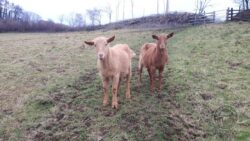 On the 27th two new 2-year-old Golden Guernsey neutered male goats, Archie and Alfred (the Great), arrived to keep Annie company. She is the dominant member of the trio, and they are following her like shadows.
On the 27th two new 2-year-old Golden Guernsey neutered male goats, Archie and Alfred (the Great), arrived to keep Annie company. She is the dominant member of the trio, and they are following her like shadows.
More Frog activity was seen in the Oakley Pond on the 30th with the amount of spawn increasing. Primroses had started emerging along field boundaries along with Snowdrops in the remnant hedge and Daffodil around the owl aviaries by the 31st.
The mean temperature in the month was 6°C, just below the January average here of 6.23°C. We had a high of 12.6°C and a low of -2.2°C. The main weather event of the month was the rain with 281.5mm over 20 days compared to our 18 year average of 149.5mm, a 188% increase! We almost beat our all time 2014 record of 286mm in 2014 and 285.3mm in 2016.
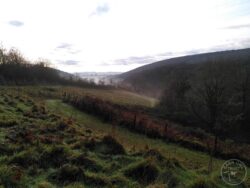
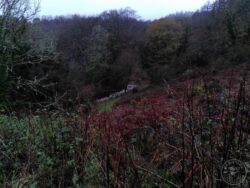
![Llp vols fire 2 [harry hingston] 121223 (a)](https://staging.barnowltrust.org.uk/wp-content/uploads/LLP-Vols-fire-2-Harry-Hingston-121223-A-250x188.jpg)
![Llp staff + vols hedgelaying [harry hingston] 151223 (a)](https://staging.barnowltrust.org.uk/wp-content/uploads/LLP-Staff-Vols-hedgelaying-Harry-Hingston-151223-A-250x188.jpg)
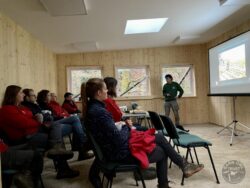
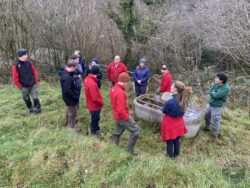
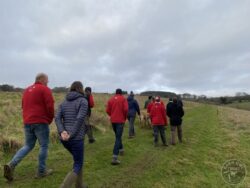
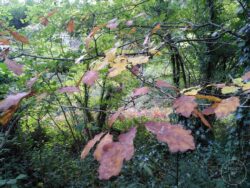

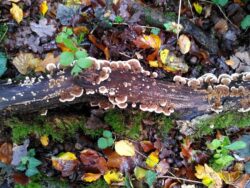
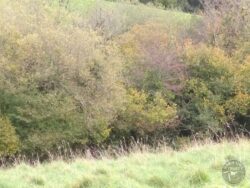
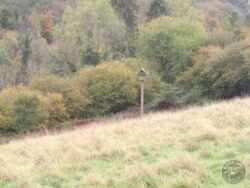
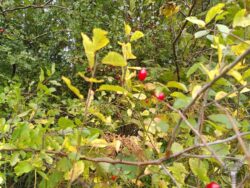
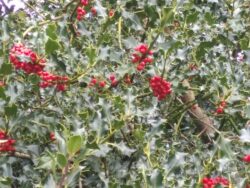

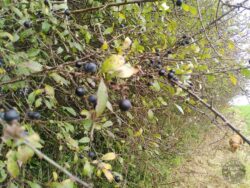
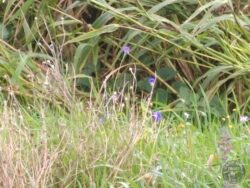
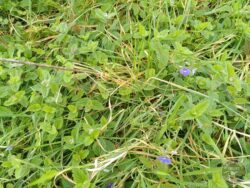
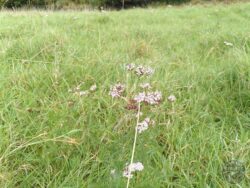
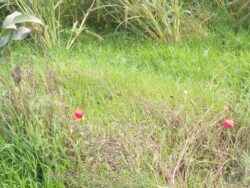
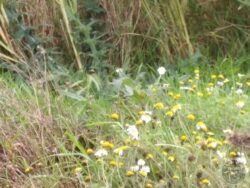

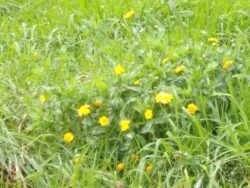

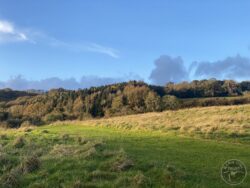
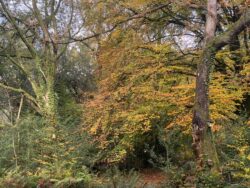
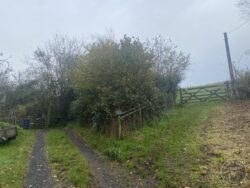
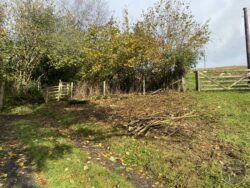
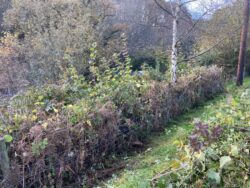
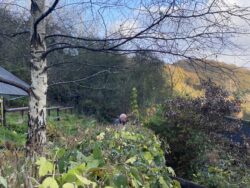
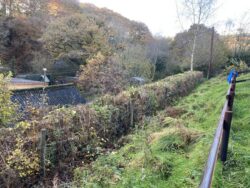
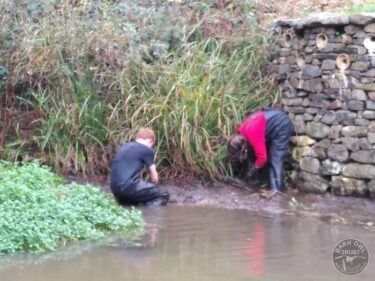

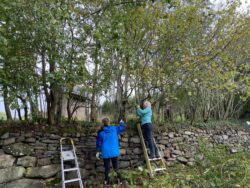

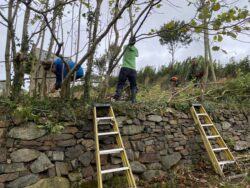

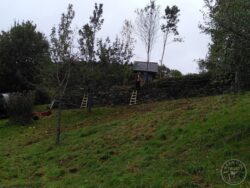
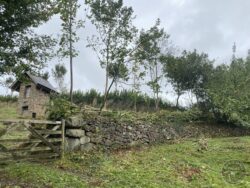
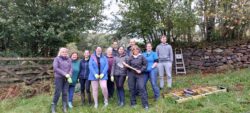
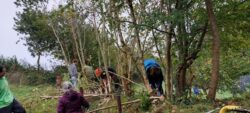
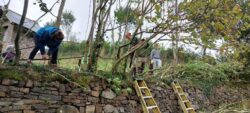
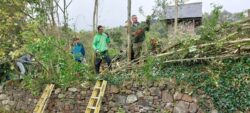
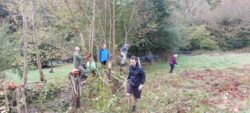


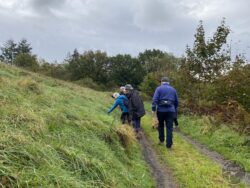
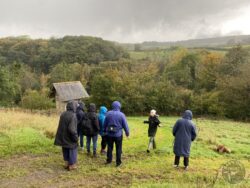
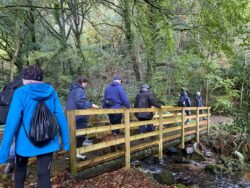



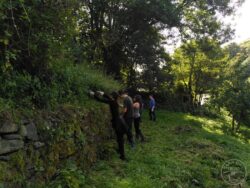
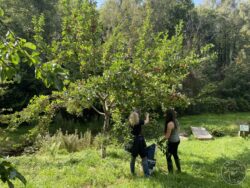


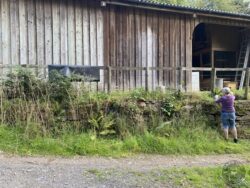
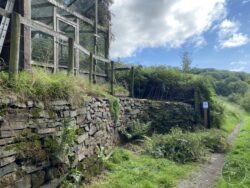
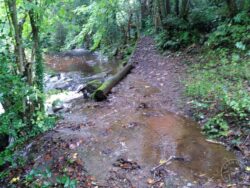
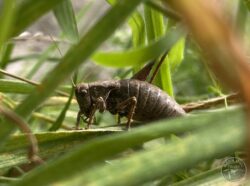
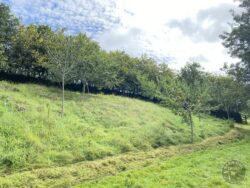

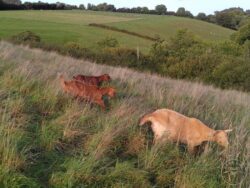
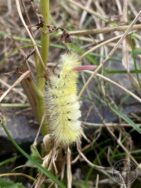
![Llp crop dwarf sunflowers [harry hingston] 040823 (a)](https://staging.barnowltrust.org.uk/wp-content/uploads/LLP-Crop-Dwarf-Sunflowers-Harry-Hingston-040823-A-141x188.jpg)
![Llp shaggy inkcap [harry hingston] 070823 (a)](https://staging.barnowltrust.org.uk/wp-content/uploads/LLP-Shaggy-Inkcap-Harry-Hingston-070823-A-141x188.jpg)
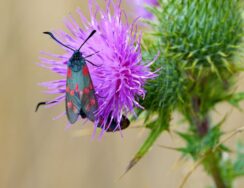
![Llp forde orchard annual cutting [harry hingston] 260723 (a)](https://staging.barnowltrust.org.uk/wp-content/uploads/LLP-Forde-Orchard-annual-cutting-Harry-Hingston-260723-A-250x188.jpg)
![Llp river before [harry hingston] 040823 (a)](https://staging.barnowltrust.org.uk/wp-content/uploads/LLP-river-before-Harry-Hingston-040823-A-250x188.jpg)
![Llp river after [harry hingston] 040823 (a)](https://staging.barnowltrust.org.uk/wp-content/uploads/LLP-river-after-Harry-Hingston-040823-A-250x188.jpg)


